The Thunderbird was one of the most advanced, practical motorcycles ever to come from the stables of Royal Enfield, until the Continental GT and the Himalayan came into the picture. The motorcycle comes with many touring-friendly features which one doesn’t find on other bikes like the Classic or the Bullet. Adding to this, the community which Royal Enfield offers is unparalleled. So, when I was looking to buy a good touring motorcycle, I decided the Thunderbird fits my bill the best. So, I booked the bike in December 2014 and got it delivered on February 19th, 2015. After almost one and a half years and 15,000+ km later, here’s what I have to say about the bike:
[B]Powerplant and Performance:[/B]
The Thunderbird is powered by a carburetted 346 cc air cooled Unit Construction Engine. Power and torque delivery is quite linear. The engine gives the bike a gentle but steady push and the powerband tapers off post 4000 rpm. Low-end torque is decent, but the difference is felt considerably when compared to the Himalayan. Of course, Himalayan comes with an oil cooled 410cc long stroke engine. The biggest enemy of this bike’s acceleration is its kerb weight. At 192 kilos, the kerb weight is a bit too much for a 19.8 bhp motorcycle. But hey, it is a Royal Enfield! Speaking of power figures, the said peak power comes in at 5,250 rpm, which is way too high in my opinion. Especially considering the fact that the bike redlines at 5,500 rpm which is next to impossible to hit owing to severe vibrations that will rattle you to your soul, and your granddad’s soul. A maximum torque of 28 Nm peaks out at 4,000 rpm and the shove, as mentioned before, is pretty much apparent while riding the bike.
The best cruising speed for the bike is 80 kph at fifth gear with the tachometer hovering around 3100- 3200 rpm. The gear ratios are long and are decently spaced. At 80 kph, the vibrations are just under control so as to give you a pretty decent riding experience. Going at any speeds past that will be welcomed by more severe vibrations which are quite intrusive, honestly. At 60 kph, the bike feels most refined with minimal vibrations (going by Royal Enfield standards :P ) and almost negligible exhaust noise.
Coming to the exhaust note, it is really mild and docile compared to the rest of the products in Royal Enfield’s portfolio. You can hardly hear the distinct ‘thump’ at low speeds. But yes, the thump is more pronounced when revving the engine but it is not as good as the Bullets of the yore.
[ATTACH=CONFIG]n19253[/ATTACH]
[B]Ride and Handling:[/B]
Yes, the weight plays spoilsport when it comes to low-speed handling but despite that, the motorcycle is pretty agile for its class. The front rake has been decreased from the previous generation Thunderbird and this has resulted in a shorter wheelbase. Consequently, the handling has improved over the previous model. Once you get used to the big handlebars, manoeuvring the bike is manageable, provided you put in good effort to turn. Reversing the bike is a pain, especially for shorter riders despite the low saddle height, the width of the seat hampers easy movement. High-speed handling is quite satisfactory for a Royal Enfield and the heavy weight indeed aids in stability, giving the bike a planted feel. The frame too offers a reasonable balance between rigidity and versatility. However, the bike doesn’t inspire confidence while making sharp turns at high speeds. The bike comes with 41mm front forks and twin gas charged adjustable shock absorbers at the rear. The front offers 130 mm of travel while the rear offers only 80 mm of travel, true to a cruiser’s credentials. The suspension compression is on the firmer side, because of which the bike handles well at high speeds. But, things can get juddery when riding over potholes. The rear suspension is also hard with most of the undulations of the road directly transferring to your back. The harshness in ride quality is particularly felt in the small-ish pillion seat as it is just behind the rear suspension mount. The small backrest is convenient to hold and provides a little respite to the lower back but yeah, the hard suspension will make the pillion complain about the ride.
When it comes to the braking department, the Thunderbird is equipped with a 280mm disc with a twin-piston calliper at the front and the rear is anchored by a smaller, 240mm disc with a single calliper. The brakes are spongy and lack direct feedback. It sure slows the bike down with haste, but it lacks vigour. The brakes could have certainly been better. As with most of the non-ABS equipped bikes with rear disc brakes, this one locks up under hard braking as well. What with the generous front suspension travel, the bike does dive in under panic braking, which is not a good thing.
[ATTACH=CONFIG]n19254[/ATTACH]
[B]Design and Features:[/B]
The Thunderbird sports a traditional cruiser style look with the front sporting a mini ape-hanger handlebar and a pair extremely practical wide angle rear view mirrors. They may not gel that well with the design, but are very useful in seeing whoever is creeping up on you from behind. Use any other rear view mirrors after the Thunderbird’s and you’ll feel others are woefully small. The headlight is a round projector unit with a semi-circular LED light guide. The twin pod instrument cluster nests atop the headlamp unit and is loaded with information. The left pod houses the analogue speedometer (marked both in kph and mph readings) and a digital display showing the odometer reading, dual trip meters with average speeds, time, service indicator, low battery warning indicator and a seven-bar fuel gauge. The right one comprises of an analogue tachometer and the portion below it is reserved for all the tell-tale lamps viz., left and right indicator lights, hazard lamp warning light, lights-on indicator, side stand indicator and a high beam indicator. The switches are of decent quality although I have noticed they tend to lose their efficiency over a period of time. My motorcycle got drenched in the rains recently and now the indicator button spring seems to have lost its action a little. Spraying some WD 40 would help. Also, the pass button is giving me trouble then and there. Most of the time it works, but sometimes it doesn’t. The only company advised solution is to replace the entire switchgear, which I am reluctant to do because of the obvious cost.
The petrol tank is a tear drop design and is executed way better than the previous generation Thunderbird. It is nicely shaped and gels well with the silhouette of the bike. The tank not only looks large, but its capacity is quite generous as well. The fuel cap is offset so that you can fill the bike to its brim. At 20 litres capacity, you can literally fill it, shut it and forget it! The saddle is very comfortable, but it could do with a bit more cushioning. The pillion seat is a tad short in length. The footpeg positions are spot on. The rider side footpegs are quite relaxed and complements the cruiser stance. I’ve rope-wound the front crash guard to give it a unique look. Plus, it prevents the crash guard from getting scratched. Yes, I have OCD. The crash guard is a butterfly-type which is the preferred fitment for the Thunderbird. It is pretty wide so you’ll have to be careful judging the width of the bike.
Also, I have installed an additional set of crash guards to protect the rear portion of the bike, including the exhaust. So now, I don’t have to worry about other bikes scratching my exhaust in parking lots. More importantly, it will also protect my leg in case the bike tips over me. The rear crash guards were installed on the suspension mounts at the top and exhaust/ footpeg mounts at the bottom. The only disadvantage is that the pillion would find it a little difficult to get used to the set up. I have dropped the bike twice and I could say it works wonderfully well!
The crash-guard set-up looks like this:
[ATTACH=CONFIG]n19255[/ATTACH]
The rear ends with a small backrest and an LED tail light. The indicators are standard round ones. I quite like the rear design. It is simple and the fairly fat rear tyre completes the cruiser look. The sturdy saree guard doesn’t look out of place either. The exhaust is a long straight unit and the long heat shield ensures your feet doesn’t get burnt. On the sides, there are two oval chromed out compartments, complying with the Thunderbird design language. The left one has space for keeping documents and first aid kit and the one on the right encloses the stock toolkit. Opening the toolbox is done by an Allen key stored in the rubber loop next to the battery, in the battery compartment. So if you want to open up the tool box, you’ll have to use your bike key to open the battery compartment first, then take out the Allen key. It is a bit tedious process. Alternatively, just take the Allen key and pair it with your key-chain. But another problem would be the metal flailing all over the handlebar clamp. That results in nasty scratch marks.
[ATTACH=CONFIG]n19256[/ATTACH]
[B]Competition and Verdict:[/B]
The Thunderbird 350 has a lot of direct and indirect competitors. The direct competitors include Mahindra Mojo, Bajaj Avenger 200 and UM Renegade Sport. Honda CBR 250R, KTM 200 Duke come under indirect competition. Each bike has its own purpose and I feel the Thunderbird really stands on its own. Coupled with the community that Royal Enfield offers, it is indeed one of the best motorcycles for a person who loves to ride and make friends with like-minded fellow riders. For this exact reason, I don't regret my purchase decision despite experiencing much better bikes. I have met a lot of interesting people because of this steed. The Thunderbird is priced at INR 1.42 Lac, ex-showroom, Delhi. The thing is, a rider who wants to buy a Royal Enfield will go for a Royal Enfield, no matter what the competition is. That’s something no other brand has achieved in India, I believe.
[ATTACH=CONFIG]n19257[/ATTACH]
[ATTACH=CONFIG]n19258[/ATTACH]

 View More Comments
View More Comments
 Add your Comment
Submit Comment
Add your Comment
Submit Comment Asked by Nagaraj Maddodi
8 Answers
Asked by Nagaraj Maddodi
8 Answers
 Asked by Knight Rider
8 Answers
Asked by Knight Rider
8 Answers
 Asked by Radha Krishna
56 Answers
Asked by Radha Krishna
56 Answers
 Asked by Tarun Sundar
118 Answers
Asked by Tarun Sundar
118 Answers
 Asked by Balamuralikrishnan
4 Answers
Asked by Balamuralikrishnan
4 Answers
 Asked by Arc Academics
4 Answers
Asked by Arc Academics
4 Answers
 Asked by Mohit Datasec
15 Answers
Asked by Mohit Datasec
15 Answers
 Asked by Shyamal Deka
4 Answers
Asked by Shyamal Deka
4 Answers
 Asked by Amit Rai
3 Answers
Asked by Amit Rai
3 Answers
 Asked by Jiten Sarma
4 Answers
Asked by Jiten Sarma
4 Answers
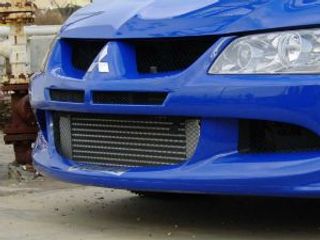 Tips and Tricks to Maintain Car Cooling Systems5 Sep, 2014 | By Team ZigWheels
Tips and Tricks to Maintain Car Cooling Systems5 Sep, 2014 | By Team ZigWheels Windscreen and Window care27 Jun, 2014 | By Team ZigWheels
Windscreen and Window care27 Jun, 2014 | By Team ZigWheels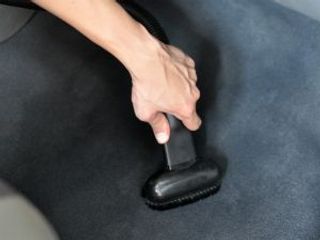 Carpets and Mats26 Jun, 2014 | By Team ZigWheels
Carpets and Mats26 Jun, 2014 | By Team ZigWheels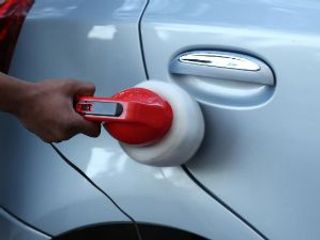 Car Polishing Tips27 Jun, 2014 | By Team ZigWheels
Car Polishing Tips27 Jun, 2014 | By Team ZigWheels Choosing a Car Cover27 Jun, 2014 | By Team ZigWheels
Choosing a Car Cover27 Jun, 2014 | By Team ZigWheels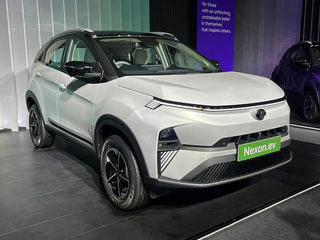 Reserve The 2023 Tata Nexon EV Facelift From Today!9 Sep, 2023 | By Team ZigWheels
Reserve The 2023 Tata Nexon EV Facelift From Today!9 Sep, 2023 | By Team ZigWheels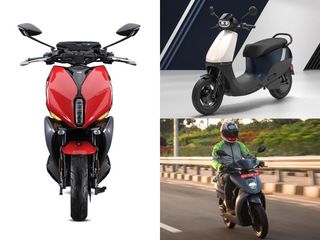 World EV Day 2023: All The Electric Two-wheeler Launching This Year Itself9 Sep, 2023 | By Team ZigWheels
World EV Day 2023: All The Electric Two-wheeler Launching This Year Itself9 Sep, 2023 | By Team ZigWheels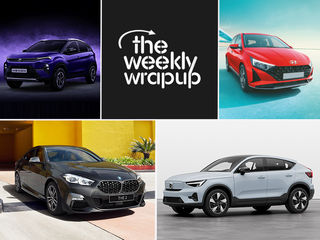 These Are Top Automotive Headlines Of The Week9 Sep, 2023 | By Team ZigWheels
These Are Top Automotive Headlines Of The Week9 Sep, 2023 | By Team ZigWheels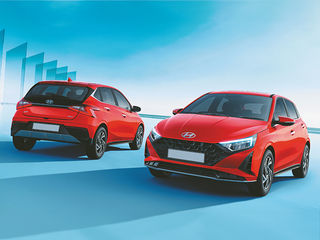 Here’s What The New Base Era Variant Of The 2023 Hyundai i20 Facelift Packs10 Sep, 2023 | By Team ZigWheels
Here’s What The New Base Era Variant Of The 2023 Hyundai i20 Facelift Packs10 Sep, 2023 | By Team ZigWheels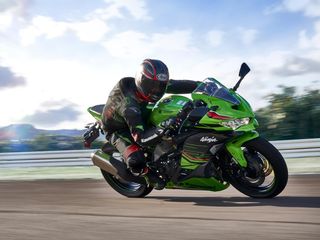 Get Ready For The Four-cylinder 400cc Screamer From Kawasaki10 Sep, 2023 | By Team ZigWheels
Get Ready For The Four-cylinder 400cc Screamer From Kawasaki10 Sep, 2023 | By Team ZigWheels


